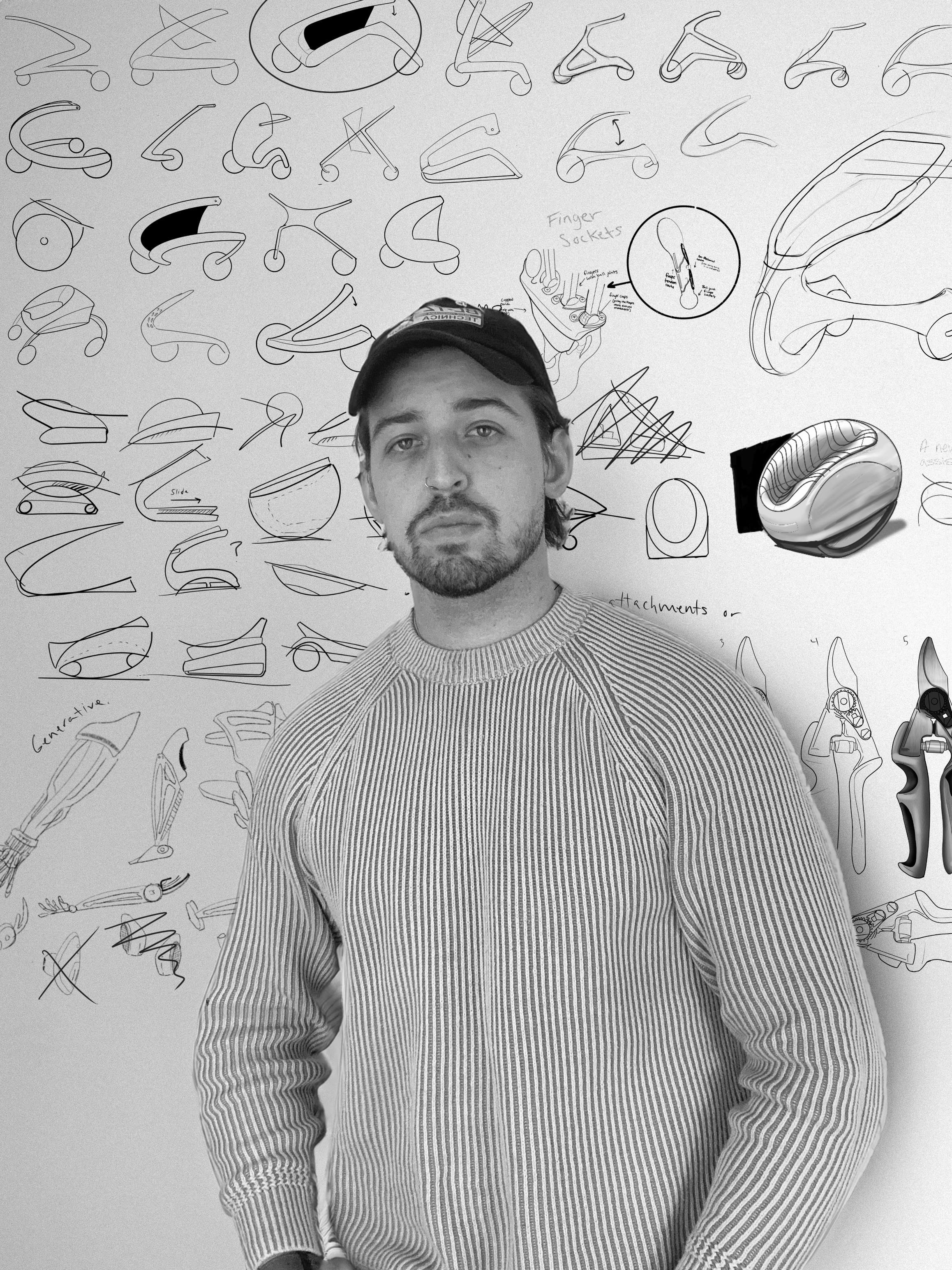What it does
Foot drop is one of the most common symptoms across mobility-related conditions—like stroke, MS, diabetes, and aging. Sole¹ uses AI and synthetic muscles embedded in fabric to dynamically orchestrate the wearer’s gait and ensure natural, secure movement.
Your inspiration
Growing up, my grandmother had MS and was always in a wheelchair until she passed. While technology transformed the digital world, mobility devices have remained stagnant: cold, rigid, and isolating. People like her lose function and are prescribed a pipeline of devices that immobilize the impaired limb, increasing support as muscles atrophy, until they become unusable. I’ve spoken with over 60 brace and AFO users, and they echoed the same burdens: stigma, discomfort, and loss of confidence. Through them I found that what they need is a device that is dynamic to keep them moving, familiar to fit their lives, and aesthetic to wear with pride.
How it works
Sole¹ is a three-part wearable system: a collar, a sock, and an insole. The collar is the brain of the device, housing the processor, battery, and LED interface. It’s worn just above the ankle and uses a push-to-tighten mechanism for users with low dexterity. It aligns magnetically to connection points at the top of the sock, which contains the synthetic muscle actuators. These are positioned around the ankle to mimic biological muscle function and control foot angle in real time. The insole is molded into the sock and contains a carbon fiber plate that anchors the actuators and returns energy during push-off. It also houses sensors that track foot orientation and relay data to the collar, which electrically activates muscles as needed. As the user walks, Sole¹ tracks their gait, lifts the foot during swing phase, and stabilizes heel-to-toe steps. Over time, it learns the wearer’s movement patterns and corrects issues like foot drag or lateral imbalance.
Design process
The design process began with systemic research across all stakeholders: patients, PTs and OTs, device manufacturers, and regulatory frameworks. I observed rehab sessions at Mass General’s PT department, interviewed patients and therapists, and spoke with over 50 AFO users to understand their needs and empathize with their pain. Across different mobility disabilities, foot drop was the common issue, forcing people into devices they could not stand to wear. I rapidly sketched concepts and co-created with users, gathering feedback to refine features. An ideal emerged from this, and I set clear design goals to meet it: under 1 lb, fits any shoe, autonomous operation for 8+ hours, costs under $3,000 or is insurable, and generates at least 100 newtons of force to ensure dorsiflexion. To achieve this, I found Nitinol, a memory alloy capable of high force in a compact, low-profile package, and began prototyping actuators. We worked to embed the synthetic muscles seamlessly into a sock for comfort, balancing the criteria of battery life, force generation, and cost. We are now iterating on the collar, sock, and insole to optimize ergonomics and empower users, while running motion capture sessions to collect gait data and train our machine learning model for real-time adaptive control.
How it is different
Sole¹ is fundamentally different from any existing mobility device. Our novel proprietary actuators are only 2mm thick and are what enables us to sew assistive muscle arrays into such a familiar, comfortable sock form that fits into any shoe. AI tailors gait correction to each user, detecting terrain changes and abnormalities in real time. We prioritize affordability by using off-the-shelf components and leveraging smartphone and wearable manufacturing techniques. Our Nitinol actuators are fully reusable, and we are building a circular system where users send in old socks for discounted replacements. Metals are harvested and reused, minimizing environmental impact and creating a more sustainable, closed-loop business. Most importantly, Sole¹ pioneers a new category: culturally iconic wearable robotics designed for the individual. We fuse biomechanics, fashion, and medical precision to make lifelong physical capability an expectation, not a challenge.
Future plans
We have built a community of over 200 people with foot drop through the Abilities Expo and online outreach. Our next step is co-creating the device with them to ensure it reflects their needs, de-risking development. We are launching user testing and iterative design aligned with FDA guidelines, aiming for 510(k) submission next year. In parallel, we are building a brand that speaks to those we serve. We plan to launch a Kickstarter to validate demand and guide production. Winning the Dyson Award would provide critical pre-seed funding to reach market launch and scale.
Awards
Sole¹ has received the Spark Grant and the GSD Student Conference Fund to support early development and public exhibition. We were also selected as a finalist for the High Potential Innovation Lab, with final results pending.



Connect